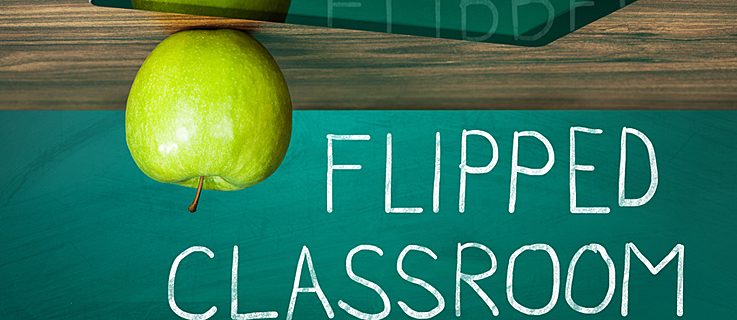How does the German “ü” sound? How is a passive sentence constructed? German learners find out in specialized books – or in explanatory videos made by teachers.

Marcus von Amsberg is a German teacher in a district school in Hamburg where children and young people of different abilities are taught together. Sitting in his classes there are both pupils with learning disabilities and grammar school pupils. In order to provide them with individual preparation for new topics, Amsberg works with learning videos in which he explains his self-developed materials. The videos cover topics such as parts of sentences, word types and verb forms, and are similar in structure to a presentation, in which the required explanations are added in a commentary.
“The past participle consists in a front syllable, technically termed a ‘prefix’, a verb stem and an ending”, says Amsberg at the beginning of his video Participle II (The Past Participle), before he introduces the individual forms and illustrates them with examples. He writes the most important technical expressions in different colours, as on a whiteboard. As a rule, the pupils are supposed to view a video at home in preparation for a school lesson; this allows more time for teaching. Practitioners of this method such as Amsberg call it “Flipped Learning” or “Flipped Classroom”, learning which reverses the traditional learning environment.
Not only Amsberg’s pupils work with his learning videos, which can be viewed on auf
ivi-education.de and YouTube free of charge and of ads; he also receives feedback every day from other people who have come across his material – for instance, from GFL learners. “Colleagues sometimes criticize me because I speak very slowly and clearly in my videos and name everything that is shown. But weak pupils and non-native speakers are grateful that they can understand my explanations and have at the same time a linguistic demonstration in the videos”, emphasizes the German teacher.
Everyone at his own space
Birgit Jensen, Professor of German Studies at the East Carolina University, also uses self-developed explanatory videos in order to give her students an understanding of the German language: “In teaching, it often happens that some students are bored while others don’t understand the material because they learn more slowly or lack the needed background. The videos provide students with the opportunity to acquire basic knowledge, to review explanations and definitions when and as long as they like, and to skip parts whose content they already know.”
Jensen also uses videos in foreign language teaching for explanations of grammar in the students’ native language, which they need as a basis for acquiring German. “Many don’t know what an adjective or a relative clause is in English, so that when introducing German grammatical terms I can’t assume this background. When I furnish the explanation in a video, I then have more time in the seminar to talk with the participants in German.”
Saving precious teaching time
The Flipped Classroom/Flipped Learning teaching method was first used in the United States and has been becoming more and more popular in Germany over the last three years. In contrast to traditional teaching, the transfer of knowledge here takes place through homework, so that the scant time for classroom teaching can be used for application and practice.
Through the videos, pupils can study learning content at their own pace and pose any questions that may arise later in the classroom. “Especially when it comes to individual questions and problems, pupils depend on the support of their teachers”, says grammar school teacher Felix Fähnrich. Together with his colleague Carsten Thein, he uses the Flipped Classroom principle mainly in teaching mathematics. He now also collaborates with a textbook publisher and regularly passes on his experience in lectures and workshops. Thanks to appropriate apps, even less technically skilled teachers can now create their own explanatory videos.
Structured and precise learning content is important
High-quality explanatory videos, experts agree, put learning content in a nutshell – concisely, precisely and in structured form. Ideally, they should be no longer than six minutes. “If you film a presentation and constantly repeat yourself, that gets on pupils’ nerves. In a good video, every sentence has been thought through”, says Marcus von Amsberg. Birgit Jensen also makes a point of making her videos humorous: “In order for my students to look at the explanations at all, I have to motivate them. For example, to loosen up the mood in a video about prepositional phrases, I use the Beatles song
She came in through the bathroom window. But of course you have to be careful about copyrights.”
Producing good learning videos takes time. But, like all high-quality teaching materials, they can be used again and again. Moreover, online, they are available to all learners and interested colleagues. “In the United States, the Khan Academy has in this way created a huge learning system accessible to everyone free of charge”, says Felix Fähnrich enthusiastically. Because these English language materials are only partly suitable for German-language pupils, however, he would ike to promote the networking of colleagues in Germany, including with the portal umgedrehterunterricht.de, where teachers can publish their materials and share their experiences.
